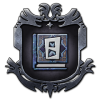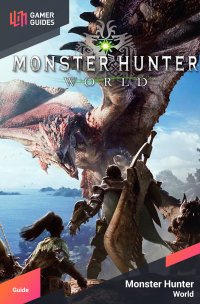| Quest Info |
|---|
| Objective: Complete the assignment |
| Reward Money: 19800z |
| Time Limit: 50 min. |
| Conditions: HR 15 or higher |
| Failure Conditions: Time Expires / Faint 3 Times |
| Other Monsters: None |
Before you depart, let’s talk preparations. The next enemy you’ll be facing fortunately doesn’t require anything novel in terms of gear. While it doesn’t have any elements it heavily relies on, it can create patches of heated ground that’ll set you on fire and deal damage to you while you’re on it, so bringing along Fire Resistance gear will get rid of this nuisance and make the fight somewhat easier, overall. In fact, similar gear to what you used to fight Teostra will work fine here, too. There’s no element the next monster is strong or weak to, so anything goes in that regards, but it is weak to Poison, so if you can work that in, it may help. With that out of the way, eat a good meal and post this assignment.
Hunt - Xeno’Jiiva¶
When you arrive, speak to the Admiral and he’ll tell you about the convergence of energy that lies ahead, and blatantly lie to you about this being the point of no return… but you can totally back out of the quest later on, say, after the cutscenes are over. You know, if you wanted to try the upcoming battle with some friends. Head downhill and talk to The Seeker - the man you met in the Wildspire Waste - and he’ll chatter with you a bit. Afterwards, talk to him again and agree to board the boat (on subsequent visits, use use the hitching post to fly there via Windrake). Watch the scenes that follow, after which you’ll be in battle with a new monster…
| Elements | . |
|---|---|
| Fire | * * |
| Water | * * |
| Thunder | * * |
| Ice | * * |
| Dragon | * * |
| Ailments | . |
|---|---|
| Poison | * * * |
| Sleep | X |
| Paralysis | * |
| Blast | * * |
| Stun | * |
Beating up on a newborn Elder Dragon might not seem too sporting, but given the size of the infant monster, it’s best to deal with it before it has a chance to grow up, lest you end up with another Zorah Magdaros on your hands! All Elder Dragons have their quirks, and Xeno’Jiiva is no different, having two notable combat features; charging itself up, and clumsiness… or perhaps over-zealousness. The two are related, although you can’t really blame the young Elder Dragon for its inexperience.
At the outset of the fight you’ll find yourself on a fair-sized, flat battleground with no noteworthy features. Certainly large enough for a battle with such a large monster. The fight doesn’t start out too challenging, Xeno’Jiiva is a rather plodding, large monster with a few bursts of speed.
Its normal attacks include a tail smash, where it’ll slam its tail on the ground, hoping to catch hunters with it, although the base of the tail doesn’t come anywhere close to the ground, so you’re only likely to be hit if you’re standing well behind the monster. It can also perform a somewhat lumbering charge, which does relatively minor damage. Despite its massive limbs, they’re rarely used for direct attacks, but as Xeno’Jiiva moves, charges and turns, contact with its limbs can knock you down and deal minor damage. The most athletic attack you’re likely to see early on is an exception that proves the previous rule - Xeno’Jiiva will rear up on its hind legs, and slam its arms down on the ground in front of it, sliding forward for good measure. This attack deals heavy damage, so if you see the Elder Dragon rearing up, roll behind it, or to the side.
On top of those physical attacks, Xeno’Jiiva can spit out energy blasts, which comprise a huge portion of its offensive arsenal. These energy blasts come in several varieties, centered around two main attack types; the quick blast and the sustained beam. Xeno’Jiiva can spit out a single burst of energy, or it can send out several such volleys in succession, with one three-burst attack (front, right and left) being capable of hitting hunters near its otherwise safe front limbs, but otherwise not being very well aimed. Another succession of blasts can include more individual attacks, and Xeno’Jiiva will roughly track a target and not follow a generalized attack scheme. All of these are easily dodged by rolling if you’re aware of them.
The sustained beams are more powerful and can be trickier to avoid, depending on your positioning. The most common is a frontwards, static beam that persists a few seconds, which Xeno’Jiiva will advertise by hopping back. If you see the infant Elder Dragon (oxymoron much?) scuttling back, you can bet this attack is soon to follow. Variations (which don’t always include the pre-emptive retreat) include a sustained energy beam that Xeno’Jiiva sweeps horizontally across the battlefield. Xeno’Jiiva can also rear up on its hind legs and spit a torrent of energy on the ground, waving the beam back and forth. With a similar appearance to its front leg slam attack, it can be tricky to tell the two attacks apart, but since both affect the area in front of Xeno’Jiiva, you can avoid both by simply being elsewhere when the Elder Dragon rears up on its hind legs.
As the fight progresses, Xeno’Jiiva will build up energy, as evidenced by its increasingly brightly-glowing front legs, head, tail and wings. At the highest stages of this charge, Xeno’Jiiva’s normally blue-body will start to glow orange. While it won’t gain many new attacks when it’s charged up, the attacks it already had will change and become more dangerous. When it moves (especially during its charge attack), it’ll leave behind a trail of fire, burning hunters who stand on it… provided they’re not sufficiently protected. Its sustained energy beams will also leave trails of fire behind, and between the two, this can coat a significant portion of the battlefield, especially the coveted areas directly under Xeno’Jiiva. Not good news for close combat hunters.
In addition, explosions will be added to some of its attacks, including its tail slam (again, the glowing end of the tail deals damage, and is the center of the subsequent explosion). It can also perform a tail sweep, which will be followed by a line of explosions. It’s two rear-back attacks will be affected, too, as its front-leg slam will no longer be accompanied by a slide. Instead, Xeno’Jiiva will now press its front limbs through the ground and leave an explosion in its wake, accompanied by several, smaller “mine” explosions (if you see glowing blue lights, avoid them). Xeno’Jiiva can also deploy these mines voluntarily, instead of merely as a follow-up to this ground-smashing attack.
Its other rear-back attack - the sustained energy beam - will also involve Xeno’Jiiva punishing the ground, but this time in a way that may be beneficial to you. The new heat of its charged-up body and the ferocity of the attack is apparently too much for the ground to contain, and Xeno’Jiiva’s sustained, waving energy beam will result in the floor collapsing under the newborn monster. This will cause a tremor and perhaps light damage if you’re nearby, but it’ll also leave Xeno’Jiiva vulnerable and flailing about for a time - long enough to recover and mount a counter-attack.
Midway through the fight, Xeno’Jiiva will fly off and oblige you to follow, which you’ll automatically do via Windrake. The new arena has a few crystal pillar formations scattered about, but otherwise is of a similar size, and the more open confines will also facilitate Xeno’Jiiva aerial attacks. These are few and uncommon, but can be annoying for characters without a ranged weapon… or with them, since Xeno’Jiiva flies high enough to reduce their efficacy. Use your Slinger to bring the monster down by shooting whatever materials Xeno’Jiiva drops during the fight (Flash Pods are of dubious value here, unfortunately) or just endure the attacks until Xeno’Jiiva lands again. Xeno’Jiiva, when airborne, will employ energy blasts and a hugely painful diving claw sweep attack.
Xeno’Jiiva’s head and tail are the most receptive to damage, but depending on your weapon type, they can both be hard targets, often being just out of reach, or moving around enough to be bothersome to strike. A less vulnerable - but more easily targeted - body part is Xeno’Jiiva’s front legs, which take reasonable Cut and Blunt damage, but meager Ammo damage. The safest target for most character are the rear legs, but when Xeno’Jiiva isn’t charge, attacks will frequently bounce off of them, and little damage will be dealt in any event. The front legs are a more promising target, and may sometimes allow you to land incidental head strikes when Xeno’Jiiva lowers its head to attack. Just be sure to dodge away when you see Xeno’Jiiva rear back on its hind legs, as you don’t want to be anywhere near where its front legs were during those attacks.
The young Elder Dragon isn’t weak or strong against any elements - all are two stars, so you shouldn’t feel compelled to make use of or avoid any particular element. Xeno’Jiiva is outright immune to sleep and cannot be mounted, but is highly susceptible to Poison, followed by the Blast ailment, with Paralysis and Stun not being particularly effective.
| Carves | Frequency |
|---|---|
| Xeno’Jiiva Shell | * * * * * |
| Xeno’Jiiva Soulscale | * * * * |
| Xeno’Jiiva Claw | * * * |
| Xeno’Jiiva Horn | * * |
| Xeno’Jiiva Wing | * * * |
| Xeno’Jiiva Gem | * |
| Rewards | Frequency |
|---|---|
| Xeno’Jiiva Shell | * * * * |
| Xeno’Jiiva Soulscale | * * * |
| Xeno’Jiiva Veil | * * * |
| Xeno’Jiiva Wing | * * * |
| Xeno’Jiiva Claw | * * * |
| Elder Dragon Bone | * * * |
| Elder Dragon Blood | * * * |
| Xeno’Jiiva Gem | * |
Best Xeno’Jiiva in combat and you’ll be treated to some ending scenes, including the credits. Huzzah! The main storyline is now complete! But there’s always more to hunt for an aspiring monster hunter…



 Sign up
Sign up

No Comments